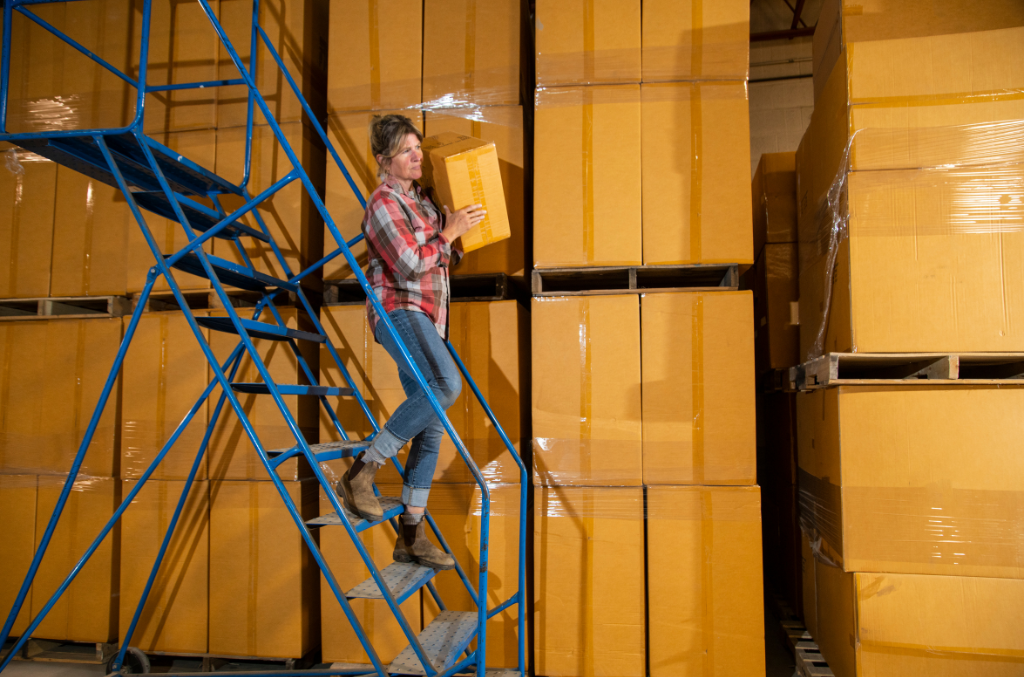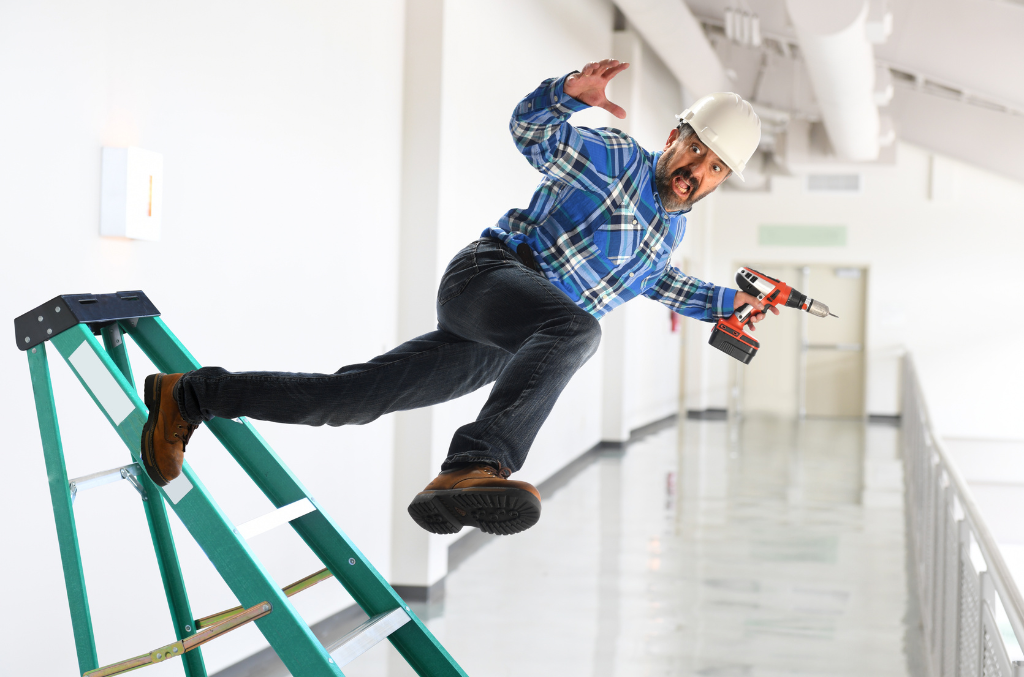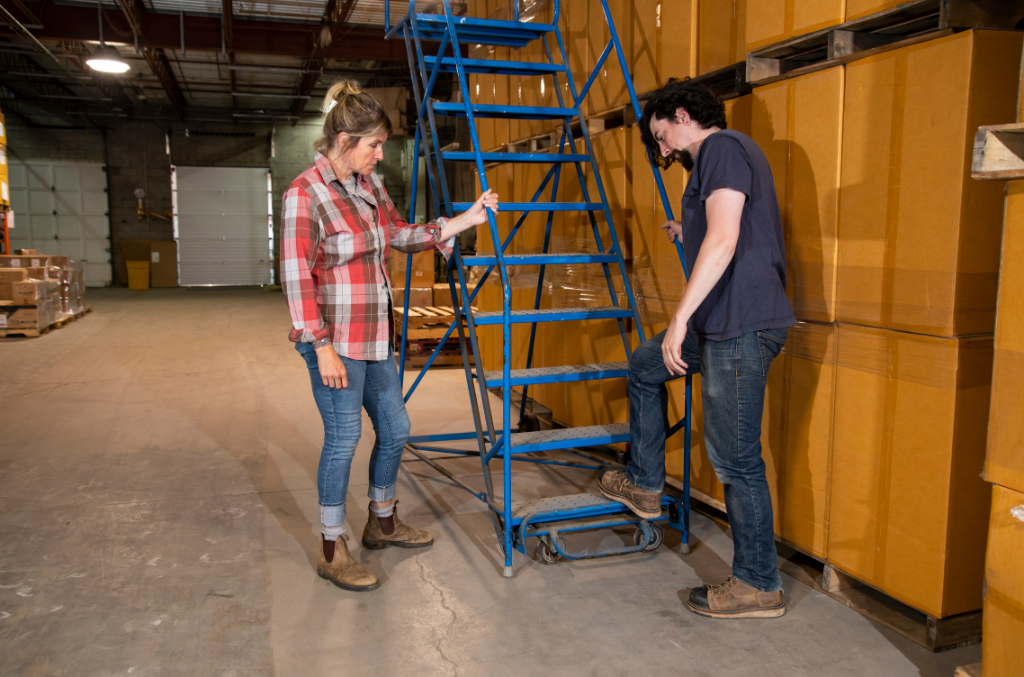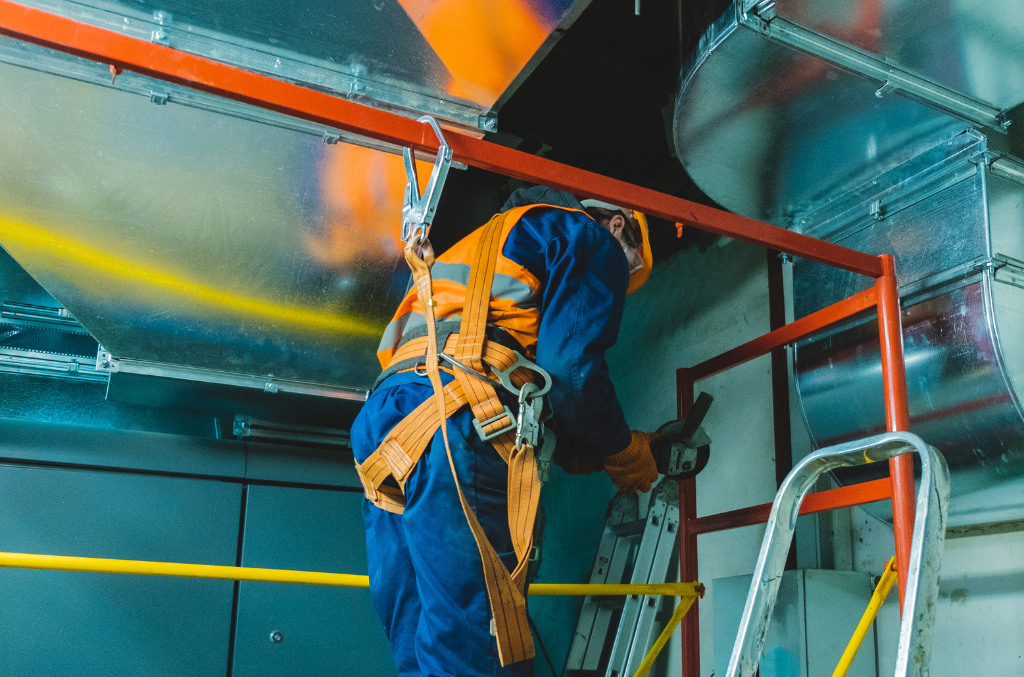Ladder Lifeline Systems
Maximizing Safety with Ladder Lifeline Systems: A Comprehensive Guide
Safety in elevated work environments is paramount. Whether you’re managing a bustling manufacturing plant, ensuring the smooth operations of a healthcare facility, overseeing the maintenance of an educational institution, or supervising building services, one thing remains constant: the need for secure, reliable, and efficient ladder lifeline systems.
Table of Contents
Understanding the Role of Ladder Lifeline Systems

Ladder lifeline systems are critical for safety in any elevated work setting. These systems offer a lifeline—quite literally—to workers who need to ascend or descend high structures, providing an essential safety line that protects against falls. Whether climbing up a power pole, accessing a roof, or working on a scaffold, ladder lifeline systems ensure that workers are always tethered to a secure line.
These systems protect workers in the event of a fall and help instill confidence, enabling workers to perform their duties with greater assurance and efficiency.
Importance of Safety Measures in Elevated Work Settings
The significance of safety measures in elevated work settings cannot be overstated. The Bureau of Labor Statistics reports that falls, slips, and trips account for a significant portion of workplace injuries. This makes fall protection measures, such as ladder lifeline systems, a necessity in industries where work at height is common.
Workplace safety is not just about preventing accidents and injuries. It’s also about fostering a culture of safety, where every worker understands the importance of safety protocols and adheres to them. A robust ladder lifeline system serves as a constant reminder of this culture, reinforcing the commitment to safety at every level of the organization.
In the following sections, we’ll delve deeper into the world of ladder lifeline systems, exploring their types, how they work, their applications across different industries, and tips for choosing and maintaining them. We’ll also touch on the regulatory aspects and review some of the top brands in the market. So, let’s embark on this journey to a safer and more secure work environment.
Understanding Different Types of Ladder Lifeline Systems

In the world of elevated work safety, ladder lifeline systems are indispensable. However, it’s important to understand that not all systems are identical. They vary in their design, functionality, and applicability, catering to specific needs and environments. Here’s a breakdown of the different types of ladder lifeline systems you might encounter.
Traditional Ladder Lifeline Systems
Traditional ladder lifeline systems typically incorporate a cable or rope that is connected to a fixed structure at the top and bottom. Workers attach themselves to this lifeline using a body harness and a lanyard or deceleration device. This system allows for vertical movement while providing continuous fall protection.
Traditional systems are widely used due to their simplicity and reliability. However, they require correct usage and periodic inspection to ensure optimal safety.
Cable-based Ladder Lifeline Systems
Cable-based ladder lifeline systems are a modern take on the traditional design. They feature a steel cable that runs along the length of the ladder, with a fall arrester that moves up and down the cable.
The fall arrester automatically locks onto the cable in case of a sudden movement, such as a slip or fall, thereby arresting the fall immediately. These systems are known for their durability and are suitable for harsh environments and heavy-duty applications.
Rail-based Ladder Lifeline Systems
Rail-based ladder lifeline systems feature a rigid rail attached to the ladder, and a trolley that glides along this rail. The worker’s harness is attached to the trolley, providing continuous fall protection as the worker ascends or descends the ladder.
These systems offer several advantages. They are easy to use, minimize the swing fall hazards associated with flexible systems, and are highly durable. They are also less likely to be damaged during a fall, making them a cost-effective option in the long run.
Understanding the different types of ladder lifeline systems is the first step towards making an informed decision about the right system for your specific needs. In the next section, we will explore the science behind these lifesaving systems, shedding light on how they work and the safety features they offer.
The Science Behind Ladder Lifeline Systems
Ladder lifeline systems are more than just safety equipment; they are feats of engineering, designed to counteract the forces of gravity and provide a secure line of defense against falls. Let’s delve into the science behind these systems and understand how they keep workers safe.
How Ladder Lifeline Systems Work
The primary function of a ladder lifeline system is to arrest a fall. They accomplish this by connecting the worker to a fixed, secure line via a body harness and a fall arrester. In the event of a fall, the fall arrester locks onto the lifeline, halting the descent and preventing injury.
The fall arrester is designed to move freely along the lifeline when the worker is ascending or descending but to lock instantly when a sudden movement, such as a fall, occurs.
The Role of Friction and Gravity in Ladder Lifeline Systems
The effectiveness of a ladder lifeline system lies in its ability to harness the forces of friction and gravity. The fall arrester, whether it’s on a cable-based or rail-based system, uses friction to lock onto the lifeline. This frictional force counteracts the gravitational force acting on the falling worker, thereby arresting the fall.
In addition to friction, these systems also use mechanical devices, such as brakes and locking pawls, to increase the stopping power. These devices engage when a fall occurs, further enhancing the system’s ability to resist the downward pull of gravity.
Safety Features and Innovations in Modern Ladder Lifeline Systems
Modern ladder lifeline systems come packed with safety features and innovations. These include shock-absorbing lanyards that reduce the impact forces experienced during a fall, self-retracting lifelines that adjust to the worker’s movements, and fall indicators that show whether the system has been involved in a fall incident.
Furthermore, some systems feature swivel connectors for greater mobility, ergonomic harness designs for better comfort, and dual lifelines for 100% tie-off protection.
Understanding the science behind ladder lifeline systems aids in appreciating their value and importance in ensuring worker safety. As we move on to explore the various industry applications of these systems, we will see how these scientific principles translate into real-world safety solutions.
Industry Applications of Ladder Lifeline Systems
Ladder lifeline systems are versatile safety solutions, finding application in a wide range of industries. Their role in protecting workers from fall-related injuries is invaluable, providing a critical safety net in various work environments. Let’s explore how these systems are used across different sectors.
Ladder Lifeline Systems in the Manufacturing Sector
In the manufacturing industry, work at height is a common requirement. Whether it’s maintenance tasks, machinery operations, or materials handling, ladder lifeline systems play a vital role in ensuring worker safety.
These systems provide continuous fall protection, allowing workers to move up and down ladders with confidence. Moreover, the robust design of these systems can withstand the harsh conditions often found in manufacturing environments, contributing to their widespread use in this sector.
The Crucial Role of Ladder Lifeline Systems in Healthcare
While not immediately apparent, ladder lifeline systems are also essential in healthcare settings. Maintenance and facility management staff often need to access high areas for tasks like HVAC maintenance, lighting repairs, or rooftop work.
Given the critical nature of healthcare services, any accidents or injuries can have severe consequences. Ladder lifeline systems help mitigate these risks, providing reliable fall protection and promoting a culture of safety.
Ladder Lifeline Systems in Education Facilities
Educational institutions, from schools to universities, also require regular maintenance and repair work. This can involve elevated work, such as repairing roofs, maintaining HVAC systems, cleaning windows, or installing equipment.
In such scenarios, ladder lifeline systems ensure the safety of maintenance staff, allowing them to carry out their tasks efficiently and without fear of falls.
Building Services and the Use of Ladder Lifeline Systems
Building services, including facility management, cleaning, HVAC, and electrical services, often involve work at height. Ladder lifeline systems are instrumental in these services, providing essential fall protection and enabling workers to perform their duties safely.
These systems are particularly beneficial in high-rise buildings, where workers need to ascend and descend multiple floors regularly.
As we can see, ladder lifeline systems have broad applications across various industries. Their role in safeguarding workers from fall hazards underscores their importance in any elevated work setting. In the following sections, we’ll delve into the aspects of choosing the right system, maintaining it, and complying with safety regulations.
Tips for Choosing the Right Ladder Lifeline System
Selecting the right ladder lifeline system is a critical decision that can significantly impact the safety and productivity of your workers. Here are some tips to help you make an informed choice.
Understanding Your Safety Needs
Before selecting a ladder lifeline system, it’s vital to understand your specific safety needs. Consider the nature of the work, the height at which tasks are performed, the frequency of elevated work, and the environmental conditions.
For instance, if your workers frequently need to ascend and descend, a system that allows for easy movement, like a cable-based or rail-based system, would be suitable. On the other hand, if your work environment is harsh or corrosive, you might need a system made from durable, corrosion-resistant materials.
Factors to Consider When Selecting a Ladder Lifeline System
When choosing a ladder lifeline system, consider factors such as ease of use, durability, and maintenance requirements. The system should be user-friendly, allowing workers to connect and disconnect easily. It should also be robust, capable of withstanding the rigors of your work environment.
In terms of maintenance, opt for a system that requires minimal upkeep, as this can lower the total cost of ownership. However, do not compromise on safety features and compliance with regulations for the sake of lower maintenance.
The Importance of Quality and Durability
Quality and durability are paramount when it comes to ladder lifeline systems. These systems must withstand significant forces during a fall, and as such, their components need to be of the highest quality. Look for systems that feature high-strength cables or rails, sturdy fall arresters, and durable harnesses.
Additionally, the system should be able to resist environmental factors like UV radiation, moisture, and corrosion.
Choosing the right ladder lifeline system is a crucial step towards ensuring worker safety. By understanding your needs and considering the right factors, you can select a system that provides reliable fall protection and contributes to a safer work environment. In the next section, we’ll discuss the proper usage and maintenance of these systems.
Proper Usage and Maintenance of Ladder Lifeline Systems

Proper usage and regular maintenance are key to ensuring the effectiveness of ladder lifeline systems. Here’s what you need to know to keep your system in top shape and maximize safety.
Basic Guidelines for Using Ladder Lifeline Systems
Using a ladder lifeline system correctly is vital for safety. Here are some basic guidelines:
- Always wear a full body harness when using the system.
- Ensure that the fall arrester is attached correctly to the lifeline.
- Do not use the system if any component appears damaged or worn out.
- Avoid sharp edges that could damage the lifeline.
- Do not use the system during adverse weather conditions, such as high winds or lightning storms.
Regular Maintenance and Inspection of Your Ladder Lifeline System
Routine maintenance and inspection are essential to keep your ladder lifeline system functioning optimally. Here are some tips:
- Inspect the system before each use for signs of wear, damage, or corrosion.
- Regularly check the tension of the lifeline and adjust it if necessary.
- Lubricate moving parts as recommended by the manufacturer.
- Replace any component that appears damaged or worn out immediately.
- Have the system inspected by a competent person at least once a year, or as per the manufacturer’s guidelines.
Addressing Common Issues and Troubleshooting
If you encounter any issues with your ladder lifeline system, it’s crucial to address them promptly to prevent safety risks. Common issues include a loose lifeline, a malfunctioning fall arrester, or worn-out components.
Refer to the manufacturer’s instructions for troubleshooting guidance. If you can’t resolve the issue, contact the manufacturer or a competent person for assistance.
Proper usage and regular maintenance not only extend the lifespan of your ladder lifeline system but also ensure that it provides reliable fall protection when needed. In the next section, we’ll discuss the regulatory aspects of these systems.
Regulatory Aspects of Ladder Lifeline Systems
Ladder lifeline systems are subject to various safety regulations and standards that aim to ensure their effectiveness in providing fall protection. Understanding these regulatory aspects is crucial for compliance and safety.
Overview of Safety Regulations and Standards
Safety regulations and standards for ladder lifeline systems are set by various regulatory bodies, including the Occupational Safety and Health Administration (OSHA) in the United States, and the European Union’s EN standards.
These regulations cover various aspects, including the design and construction of the system, the strength and durability of the components, the performance of the fall arrester, and the requirements for user training and system inspection.
Compliance with OSHA and ANSI Standards for Ladder Lifeline Systems
In the United States, OSHA sets the safety regulations for ladder lifeline systems. According to OSHA standards, these systems must be capable of supporting a minimum load of 5,000 pounds or twice the maximum intended load.
Additionally, the American National Standards Institute (ANSI) provides detailed standards for these systems. For instance, ANSI Z359.16 sets the requirements for single-user vertical lifelines and fall arresters.
The Role of Regulatory Bodies in Ensuring Safety
Regulatory bodies play a crucial role in ensuring the safety of ladder lifeline systems. They establish the safety standards, conduct inspections to ensure compliance, and take enforcement actions in case of violations.
Moreover, these bodies also provide guidance on the proper use and maintenance of these systems, helping employers and workers understand their responsibilities in ensuring safety.
Compliance with safety regulations and standards is not just a legal requirement—it’s a commitment to the safety of your workers. In the next section, we’ll review some of the top brands of ladder lifeline systems, helping you make an informed choice for your safety needs.
Different Brands of Ladder Lifeline Systems
The market for ladder lifeline systems is diverse, with several reputable brands offering high-quality products. Here’s a look at some of the leading providers in this space.
A Look at Leading Ladder Lifeline Systems Providers
3M Fall Protection: Known for their innovation, 3M offers a range of ladder lifeline systems, including the DBI-SALA® Lad-Saf™ systems, that meet the stringent ANSI and OSHA standards.
Honeywell Miller®: Honeywell Miller® is a trusted name in the field of fall protection. Their ladder lifeline systems, including the Vi-Go™ Vertical Lifeline Systems, are known for their quality and reliability.
MSA Safety: MSA provides a comprehensive range of fall protection solutions, including the Latchways® Vertical Ladder Lifeline Kits, designed for ease of use and durability.
Comparative Analysis of Different Brands
While all these brands offer high-quality ladder lifeline systems, there are differences in terms of design, features, and pricing. For instance, 3M’s systems are known for their innovative features, Honeywell Miller® offers robust and reliable systems, while MSA’s systems are praised for their user-friendliness.
When comparing different brands, consider factors such as the system’s compatibility with your work environment, the ease of installation and use, the quality of customer service, and the product reviews and ratings.
Review of Top-Rated Ladder Lifeline Systems
While each brand has its strengths, some products stand out due to their exceptional features and positive customer reviews. These include the 3M DBI-SALA® Lad-Saf™ X3 Detachable Cable Sleeve, the Honeywell Miller® Vi-Go™ Vertical Lifeline System, and the MSA Latchways® Vertical Ladder Lifeline Kit.
These systems are highly rated for their superior fall protection, ease of use, and durability. However, remember that the best ladder lifeline system is one that meets your specific safety needs and complies with the relevant safety standards.
Choosing the right brand for your ladder lifeline system can make a significant difference in the safety and productivity of your workers. In the final section, we’ll wrap up our comprehensive guide on ladder lifeline systems.
Role of Ladder Lifeline Systems In Lifesaving

The Lifesaving Potential of Ladder Lifeline Systems
Throughout this comprehensive guide, we’ve explored the critical role of ladder lifeline systems in ensuring worker safety in elevated work environments. From manufacturing and healthcare to education and building services, these systems provide an indispensable safety net, protecting workers from fall hazards and fostering a culture of safety.
With their ability to counteract the forces of gravity, arrest falls, and instill confidence in workers, ladder lifeline systems truly have lifesaving potential. Their importance cannot be overstated, and investing in a high-quality system is a testament to an organization’s commitment to safety.
Emphasizing Safety and Compliance in Elevated Work Environments
In conclusion, it’s crucial to remember that safety and compliance go hand in hand. Therefore, when choosing a ladder lifeline system, it’s important to consider not only the system’s features and suitability for your work environment but also its compliance with safety regulations and standards.
Proper usage and regular maintenance are also key to ensuring the effectiveness of these systems. By adhering to the manufacturer’s instructions and safety guidelines, you can maximize the lifespan of your system and ensure it provides reliable fall protection when needed.
As we’ve seen, several reputable brands are available in the market. However, the best ladder lifeline system is one that meets your specific safety needs and complies with the relevant safety standards.
So, remember that safety should always be a priority, whether you’re overseeing a bustling manufacturing plant, a healthcare facility, an educational institution, or building services. And ladder lifeline systems are an essential part of that safety equation.
Stay safe, and remember: safety first!
Frequently Asked Questions (FAQ)
IP Products offers a wide range of Ladder Lifeline Systems to meet your needs. Browse our collection today and find the perfect Ladder Lifeline Systems for your job. We are dedicated to quality, customer satisfaction, and fast shipping.

